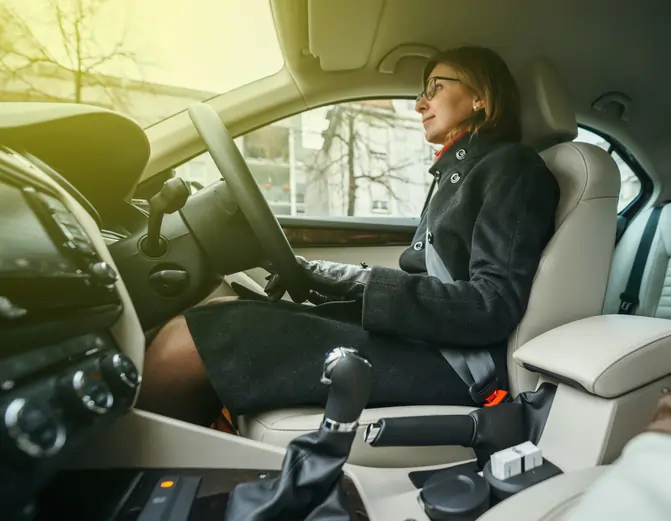
Motoring expert predicts the UK driving test pass rates of 2040
Every year, thousands of aspiring drivers across the country are judged and examined on their hill starts, parallel parking and U-turns as part of their driving tests.
According to the DVLA, from April 2022 to April 2023, 1,668,995 driving tests were taken in the UK, registering an average pass rate of 48.4%.
Comparing these figures with driving test scores from 15 years ago shows that budding motorists have become increasingly successful, as only 44.2% of exams were passed in 2007. But can we expect this positive trend to persist in the years to come?
By analysing historical data from the DVLA, cinch, the faff-free way to buy a car online, has used a prediction tool to forecast pass rates in the future based on car test outcomes by gender.
Average driving test pass rate (2023/24 to 2039/40):
- 2023/24 – 47.7%
- 2024/25 – 47.9%
- 2025/26 – 48.0%
- 2026/27 – 48.2%
- 2027/28 – 48.4%
- 2028/29 – 48.5%
- 2029/30 – 48.7%
- 2030/31 – 48.9%
- 2031/32 – 49.0%
- 2032/33 – 49.2%
- 2033/34 – 49.4%
- 2034/35 – 49.5%
- 2035/36 – 49.7%
- 2036/37 – 49.9%
- 2037/38 – 50.0%
- 2038/39 – 50.2%
- 2039/40 – 50.4%
Forecasting future pass rates
The prediction tool shows driving test pass rates increasing each year, amounting to an all-time record of 50.4% by 2040.
Sam Sheehan, motoring editor at cinch, said: “Based on our prediction tool, future pass rates across the UK are likely to improve year on year, meaning learners behind the wheel of a used VW or BMW are increasingly more likely to receive their driving licence at the end of the practical exam.
“That said, our predictive data suggests that at the end of April 2024, we will see a drop in successful tests compared to last year. In fact, our tool forecasts that a total of 47.7% tests will have been successful between April 2023 and April 2024, which is noticeably lower than the final stats in 2021/22 (48.9%) and 2022/23 (48.8%).
“The good news for aspiring motorists, however, is that the positive trend is likely to be back on track from next year, and the 2021/22 record number will be overtaken in 2031 thanks to a predicted average pass rate of 49.0%.”
By April 2040, male and female learners are expected to have a better chance of officially becoming motorists. Women, in particular, are expected to massively improve their performance on the day of the test.
So far, the highest pass rate for female drivers in the UK has been in 2021/22, with the overall percentage of successful exams standing at 46.7%. According to cinch’s predictive data, the figures will rise exponentially over the next decade or so, with the average female pass rate reaching a solid 49.8% by 2040.
What will future driving tests look like?
So, why are future budding drivers expected to register better pass rates over the next 15 years?
One of the reasons is that driving tests could change due to the advancement of car technology. This could allow learners to hit the road with more confidence both in their lessons and on the actual day of the test.
In the past few years, there have been plenty of tweaks and updates to the practical test, allowing learners to make use of electronic handbrakes, hill-start assist and parking sensors. What’s more, in 2017, a section was added in which students are required to drive independently following the instructions from a sat-nav.
In the years to come, those behind the wheel might be able to benefit from assisted driving features throughout the exam. These could include blind spot assistance, lane departure detection and forward collision warning, which alerts the driver of obstacles that might cause a crash and helps them keep a safe distance.
Simulated scenarios could also become standard practice. Virtual reality simulators might be used to train and assess a learner’s abilities and decision-making in a realistic but controlled environment, allowing people to hone and prove their skills without worrying about potentially hazardous mistakes.
As part of an eco-conscious push, examiners might soon start asking questions about sustainable driving and fuel-efficient road behaviour. For instance, questions like ‘what tyre pressure is ideal for a car’s fuel consumption?’ and ‘how do you recharge an electric vehicle?’ might soon become the norm.
With the average pass rate predicted to increase throughout the next 15 years, we can expect more budding motorists to get hold of their driving licence. Thanks to innovative tech and potentially revised driving tests, nailing your exam might be just that extra easier.


